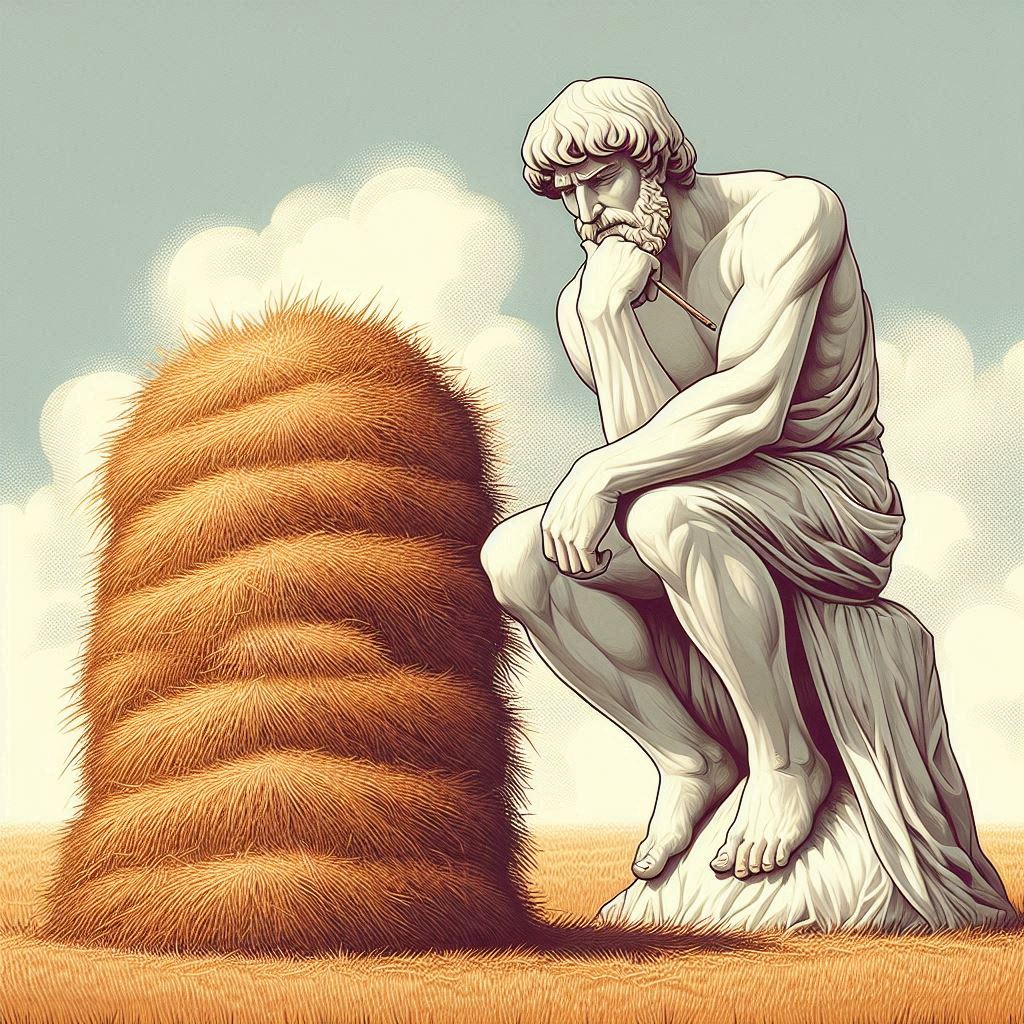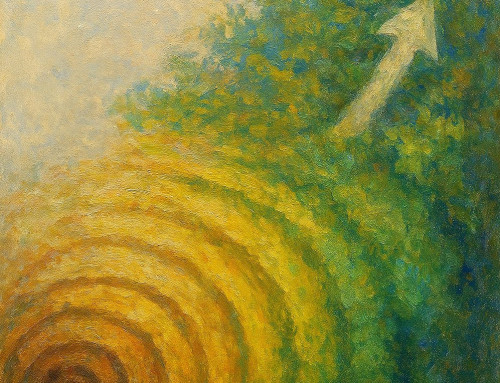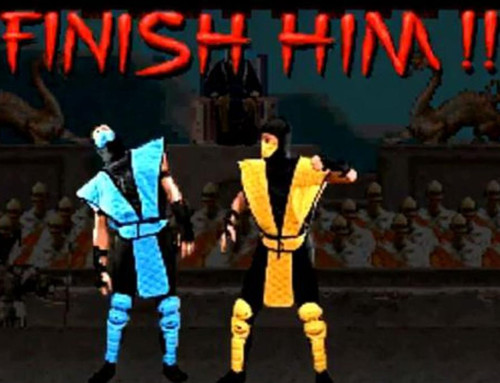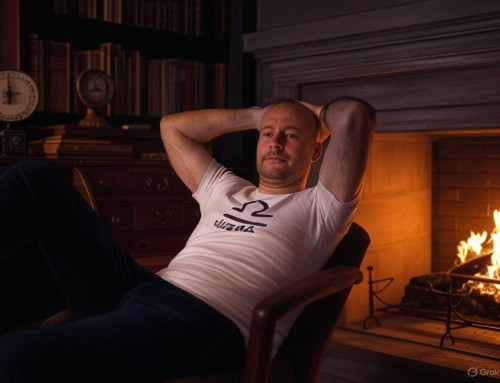Aristotle, one of the greatest minds of all humanity. He taught us that men have more teeth than women, men’s blood is hotter than women’s, and the earth is the center of the universe. He may have lived in the mid 300’s B.C., but all his ideas and thoughts still hold true today! What’s that? You’re counting you and your friends’ teeth and it’s the same number? And the earth isn’t the center of the universe? At least men’s blood is still hotter than women’s, right? Uh, yeah, I guess he wasn’t right about everything. Or much of anything, really. But why is he so revered? And how does Aristotle relate to martial arts? You should know by now I can connect any two dots, no matter how far apart. It’s my superpower.
Aristotle, while wrong about a lot, was a brilliant thinker. He created formal logic, classified fields of knowledge, and was a pioneer in the methods of scientific analysis. Was he wrong? Yes. Like, a lot. But that’s part of the scientific method. Not just finding the answer like finding a needle in the haystack. It’s about eliminating wrong answers, to find the answer.
If you just try and find a needle in a haystack, but don’t know what the needle looks like, you may never find it. But if you examine each piece of straw as you go, and learn from each, you’ll eventually eliminate all the hay that’s not a needle, leaving only the needle behind to be found confidently. This scientific method of eliminating the wrong answers is where I connect the dots to martial arts. If you’re not a martial artist, it may be a surprise to hear, but martial arts make heavy use of science and the scientific process.
I know many believe that martial arts like Karate, Kung Fu and Taekwondo have been around for thousands of years and have never changed, but that is far from the truth. It’s constantly evolving. I won’t recap the origins of martial arts here as I’ve written about it in previous blog posts and in my most recent book, “A Journey Through Martial Arts Myths and Misconceptions.” But most of the martial arts we know today were fairly new developments. As in the nineteenth and twentieth centuries. But the process to get to this point has been evolving along with humans.
Most of the martial arts we know, and love today, have techniques and philosophies that stretch far back into the history of fighting and warfare. Taekwondo may have officially been named and created in 1955, but the process of development began hundreds, if not thousands of years back. Maybe a caveman tried punching a fellow caveman trying to steal his food. In the process he broke his hand with an improper punch. The next time he had to ward off a cave-thief, he may have opened his hand and struck with his palm instead, saving his hand from being broken again. Pain and injury can be a great teacher!
This is what I mean by the scientific process of developing these martial arts. There were a lot of trial and error on the battle field. Each altercation brings about more adjustments to the martial art being developed. This process is why so many martial arts techniques are similar or possibly the exact same even though these different martial arts may have developed across the world from another. We all have very similar bodies, weaknesses and strengths.
Making a fist with your hand to throw a punch is virtually the same across the board. All good punches involve curling the fingers first and then keeping the thumb on the side or wrapped over the folded fingers. Any other way of making this fist would lead to broken fingers/thumb or injured wrists. The biggest difference in martial arts styles then becomes philosophy (striking at a distance vs short range grappling vs weapons) and cultural differences.
It’s important to also know that every individual has different needs, different skill sets, different shapes, and so on and so forth. Even with over thirty years of experience teaching, I can’t just look at someone and know what techniques will work best for them. It’s a process. While everything I teach in my programs are “doable” for most anyone, that doesn’t mean every technique and self-defense application is the best option for everyone.
Martial arts are all about self-discovery and self-improvement. We don’t teach a set of moves that work perfectly for everyone. We throw numerous techniques, scenarios and options at students. Students then learn the technique, train it consistently, and apply it to scenarios. Then, once it’s well understood, the student either keeps it in their arsenal, or sets it aside as something that doesn’t work as well for them.
Some students are fantastic with their striking techniques and can find a way to punch or elbow their way through anything. Other students can land a nasty kick in any situation. Others still can grab you, slam you to the ground, and tie your limbs into a pretzel. But this all starts by training all elements first. If all you do is focus on hand strikes and ignore all other elements, how do you know that strikes are your best option? And how would you know how to deal with a kick or a grappling technique if you’ve never learned how they work?
I often tell my students often to “play” with a new technique I’ve given them. The intent of this is to have them try and find what works, what doesn’t, and where the boundaries and limitations of the technique lay. Some techniques work fantastically in one scenario and are completely useless in other scenarios. As an instructor, I can’t spend hours explaining every scenario. Even if I did, no one would remember it all. Trial and error works so much faster when in a controlled environment. One simple movement that fails can provide feedback and knowledge that can be applied to numerous other scenarios.
As I’ve covered in many of my blog posts, it’s ok to fail numerous times over when learning a new technique or even an old one that is being looked at in a new light. It’s also ok to be wrong, no matter how experienced we are and no matter what our rank. As an instructor, I can teach something the same way for numerous years, only to see it performed better by someone else or used in a different way that could change the way I teach it.
It may seem like a simple armbar, or counter punch may be cut and dry for its use and downfalls, but it’s far from it. In all three of the martial arts systems I teach, there are numerous levels to even the most simplistic technique. I’ll give you an example of a wrist lock. In my Hapkido system, a basic outward wrist lock is taught in white belt. You place both hands on the opponents’ hand (thumbs on the back of their hand), and you bend their wrist (palm towards their wrist), then torque the wrist outward (where their thumb is pointing).
This joint lock is pretty straight forward. You bend and twist the wrist to take the opponent down to their back. Easy! Until I explain that the attacker might be punching you with the other hand. Now the student needs to think about positioning and movement while applying the wrist lock. Or you can adjust the technique so that you only need one hand to apply it, which allows you to keep your other hand up to block, strike, or restrain the attacker’s other hand. Then I mention the follow up technique. Just placing the person to the ground isn’t stopping anything. They may just get back up and resume the attack. Therefore, we need to apply a trapping/pinning technique. But then what? Do you punch the person in the face? Do you continue to apply the joint lock? That all depends on the situation.
The technique doesn’t end there. What if they turn “this” way and get out of the wrist lock? Then what do you do to re-apply it or apply a new technique from there. And which one would you apply? There are thousands of options. And what if that attacker has friends that now want to jump in and help their friend? Yet another layer of frustration and difficulty has been presented. This simple, easy little wrist lock can now be an entire martial art dedicated to just wrist lock variations.
You can now start to see how easy it is to overlook something, even as an experienced martial artist. This is where that “play” I mentioned above comes in. I highly recommend playing around with every scenario possible with as many different training partners as possible. A shorter, slender training partner will have very different reactions than a taller, larger training partner. Some are very flexible; some are very tight and prone to those joint locks and movements. Others have great balance, and the simple leg trip no longer works on them like others.
99% of martial arts training is about finding ways to fail and 1% of our time is succeeding on a deep level. That 99% is crucial and absolutely needed. As an instructor, one of our most difficult jobs is to find creative ways to make students fail (or see where failure can happen) while keeping them motivated by that 1%. It’s all a process. When it comes to self-defense, there is no 100% chance of defending oneself in every scenario. It’s a life-long process to increase your percentage of chance. And every student is different.
There is a fine line in martial arts where we need enough confidence in our abilities and training to be successful in self-defense but also need to maintain humility in the fact that we could be wrong in what we think we know and may not have the best technique. Too much confidence brings about arrogance and a false sense of security. Whereas too much humility will deflate our self-esteem to the point of feeling inadequate in our ability to defend ourselves.
We should be confident in our ability to defend ourselves, while acknowledging that knowledge evolves with new information or situations, like having a broken arm in a cast. The best way to do this is to find as many different training partners as possible, attend seminars with different instructors, and attend/compete in some tournaments. All these things have dramatically improved my understanding of martial arts. I’ve been very lucky to live in an area where there are numerous martial arts instructors who carry little to no ego and we all learn from each other.
This is why we should do our best to use scientific methods in our martial arts training. Every technique should have a logical path as to why it’s useful to you. While it’s important to trust your instructor, we still need case studies of application and experience to really reinforce the use of these techniques. Most instructors will build and earn that trust by providing these applications either through demonstrations or explanations. Even if you fully trust and believe in your instructor, you still need to know the path that came to those conclusions.
For me, this is part of why I love forms (kata, tul, poomse, etc.). Even the most experienced martial arts instructor will not fully know what every movement is used for in every form they teach. There’s a lot of fun in trying to discover what some of these movements are used for. There are several techniques in forms I teach that I tell students, “I honestly don’t know what this technique is used for currently, but here are some options”. Thirty years later of teaching some of these movements I still have “AHA!” moments of learning a new use for a movement in a form. And it almost always comes from working with another instructor who uses a similar movement in their system or even reading/viewing a video clip from another martial artist demonstrating its use. There is always more to learn or re-learn!
No matter how you go about it, just know how important it is to find people with differing opinions or different training methods and ideas. You may change your mind in some scenarios, or you may confirm your understanding through hearing an outside source teaching the same thing. I’ve even learned from seminars/instructors who were very wrong or bad in what/how they taught. This too helps provide me with confidence in what I do. But it all comes down to fully understanding the path everyone follows to reach their conclusions. “Because my instructor said so” is not an acceptable path. And one must accept that there may be numerous conclusions that are successful. Again, it’s all about the process, not just the end result.







Leave A Comment